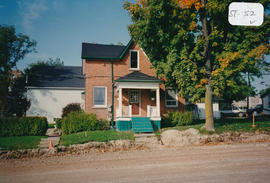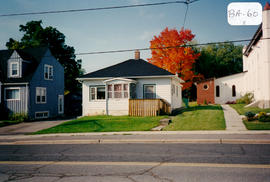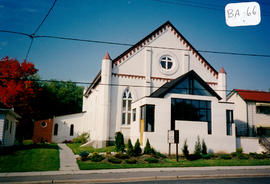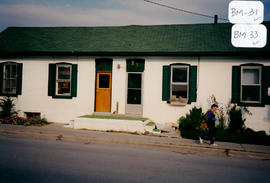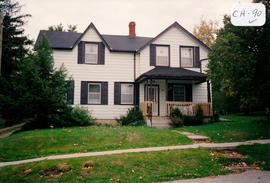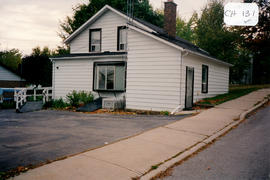- CA BWGPL GJ-HB-2017-04-18-13
- Item
- 1995
Part of George Jackson fonds
The house located at 149 Queen St. (on the northwest corner of Queen and Essa Streets) was built pre-1900 in the Ontario Vernacular Cottage style. It was once the home of the Bales family.
The 1½-storey, three-bay ‘cottage’ has a simple, rectangular form with a symmetrical façade and a centre hall plan. It has a medium-pitched, gable roof and a lack of decoration and porch addition. The replacement windows have the original, plain, wood lug sills and trim. Metal storm windows and the door are later additions. The structure also has a one-storey addition that was built at a later time. This structure has stucco cladding on 4” poured-in-place, concrete walls and a parged, stone foundation. According to the 2000 inventory, the modest dwelling requires painting and landscaping. (1, 3)
George Jackson


